An agenda for creative practice in the new mobilities paradigm
Pages 349-373 | Received 14 Jan 2022, Accepted 30 Sep 2022, Published online: 26 Nov 2022
https://www.tandfonline.com/doi/full/10.1080/17450101.2022.2136996#d1e785
Pages 349-373 | Received 14 Jan 2022, Accepted 30 Sep 2022, Published online: 26 Nov 2022
https://www.tandfonline.com/doi/full/10.1080/17450101.2022.2136996#d1e785
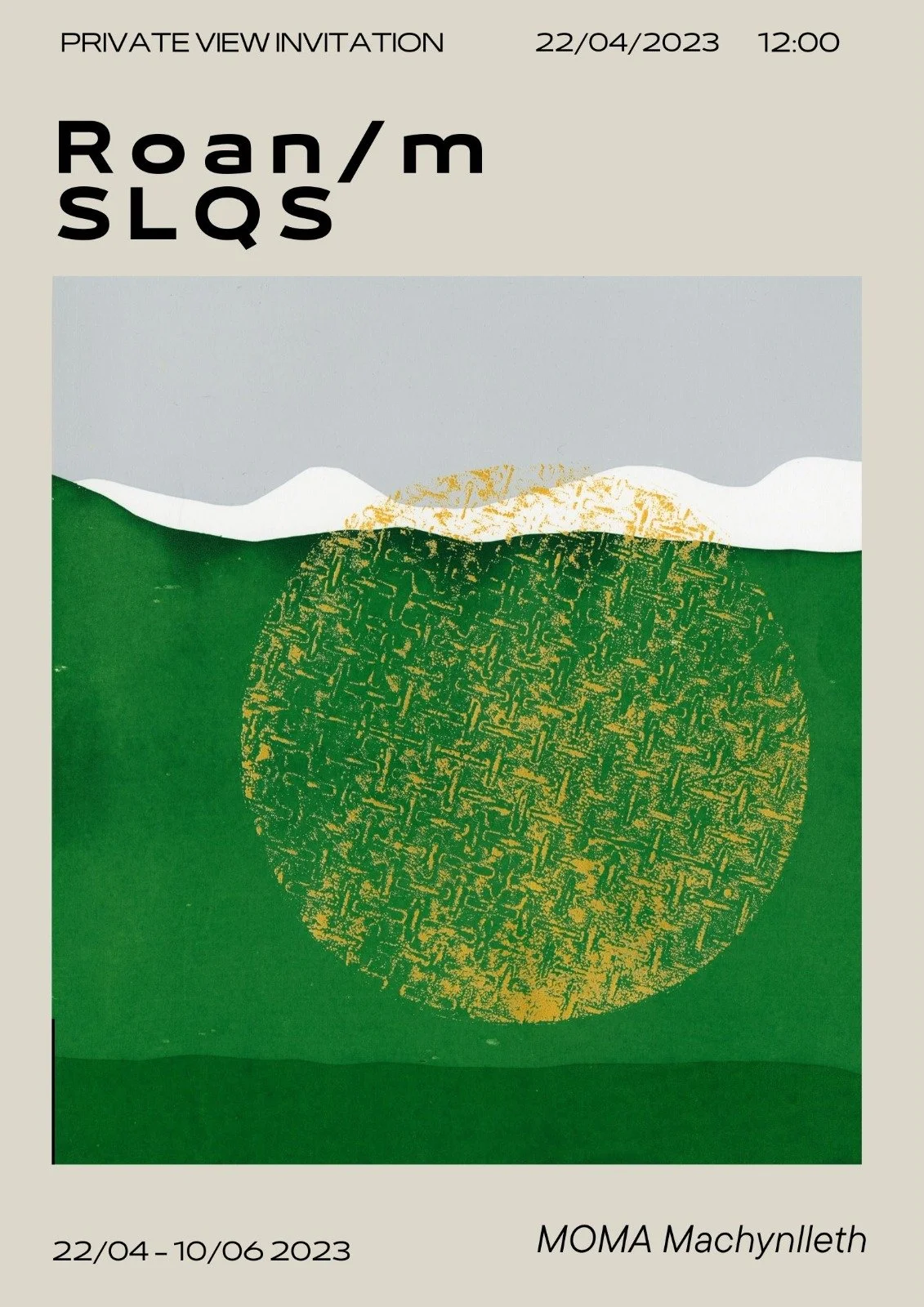
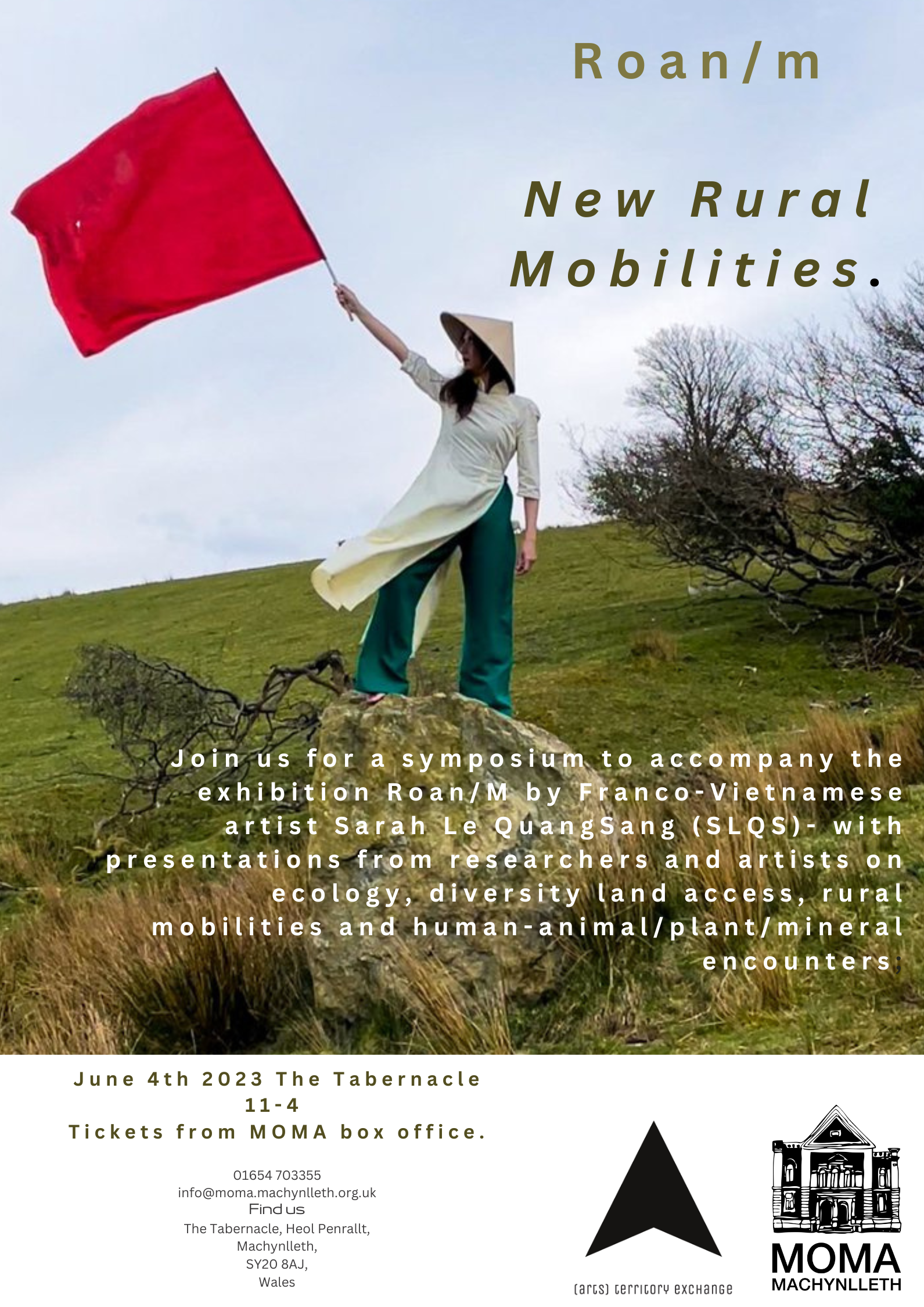

Writing commission for Pier projects about the work of Alisa Oleva. https://www.pierprojects.org/writing

So pleased to have been in this wonderful show at Soil Seattle with my work about Redwood trees, time travel, distance , anxiety and childcare.
‘‘Always On: Art and Motherhood is an exhibition that highlights the work of artists who are mothers and work additional jobs outside the home. The work presented here is not the work that gets made during coveted studio time, but rather made in a space more in-between. A space that is rarely their own, where multiple things are happening at the same time and occupying the same mental, physical, and emotional space. Ideas conceived and made while nursing, during a lunch break from work, or a walk to the park with kids in tow. This work is raw, honest, ironic, funny, and emotionally charged. It sometimes feeds into real “work” but oftentimes remains private, which speaks to a larger and more universally shared experience of artists/mothers inventing new ways to stay connected to the act of making beyond the traditional walls of a studio.
Originally conceived before the pandemic, this exhibition has taken on a new layer of meaning for many of these artists. Studio time, which was hard fought before the pandemic, became almost non-existent for many of them and the in-between time became compressed even further by additional layers of isolation, homeschooling, and complications of child care and employment in a pandemic. We are honored to have space for this work to be seen and to center the perspectives of artists/mothers at such a unique time in history. ‘‘
Kelda Martensen and Paula Rebson.

Read my essay on the Running Artfully Network http://fermynwoods.org/running-across-urgent-terrains/
Preceding the 2021 Running Artfully Network launch event I had two dreams; my dead father (who said he didn’t know how to run) running at speed up and down a Snowdonia mountainside in his work suit, and myself running across the fields, out of breath and exhilarated, waking to remember the hip injury that has kept me from running this past year. Jostling alongside these more personal reflections my attention was turned towards the curious circumambulations of people I have observed over lockdowns, running like crazy. People who maybe have never run before, older people, teenagers, children with their parents, running with a ‘get out of the house’ urgency akin to mania. I decided that there was an absurdity to this physiological tenacity in running that I found very exciting and wondered why I had almost kept my own running a ‘secret’ or at least separate from my art practice. I have made work and written about walking for a long time and have also always run – but initially, perhaps as the running bit was for my health and self care – it didn’t figure in the work.
People I knew when I was growing up didn’t run, at least I never saw anyone. For my father, the son of a Polish immigrant and coal-miner, such things were seen as a waste of time and energy. My family and their friends were walkers and climbers, these activities were thought of as synonymous with the wholistic/creative lives they aspired to in a way that running or jogging was not.
This snobbery about running has been followed through for decades in ‘walking arts’, and in academic communities is epitomised perhaps in the ‘jogging debate’ in France. Sarkozy and his regular jogs (with full bodyguard entourage), while often wearing his NYPD T shirt, infuriated those who resented both his political closeness to America and it’s indulgent neo-liberal attentions to the body…Read more
Image Credit, Run for your Life.
Poster work from ‘ If The Wasteland of England Were manured by Her Children’ . A series of (digitally generated) posters made from text in ‘The Digger’s Manifesto’ 1649 and their aims to make the land ‘a common treasury for all’ in reaction to the inclosures of land and rise of private ownership. The Diggers were a small but ambitious movement, who concentrated more on slogans and manifestos than violent protest (the fence smashing and hedge ripping we see in later protests against the inclosures). The movement has been said to foreshadow the French Revolution and the partageux (sharers) who advocated the even distribution of common land and gave root to the allotments movements of the 20th century.
The Diggers Movement and its impassioned rejection of the governing classes and their ‘Covetous, proud’ ways has much resonance in today’s Britain where people labour under the illusion that they have somehow won back their land -through the myths and mythologies spun by Brexit-when as a reality we as a nation are farther away than ever from being in touch with, or in command of our land. England is indeed ‘not a free people’.
The posters are meant to be viewed in Situ and will be installed in specific rural locations in Cambridgeshire, Suffolk, Essex, Lincolnshire, Cheshire, Northumberland and Wales through-out 2021 -22.
Installed here by Iain Irving at IOI Space Kettering Scotland.
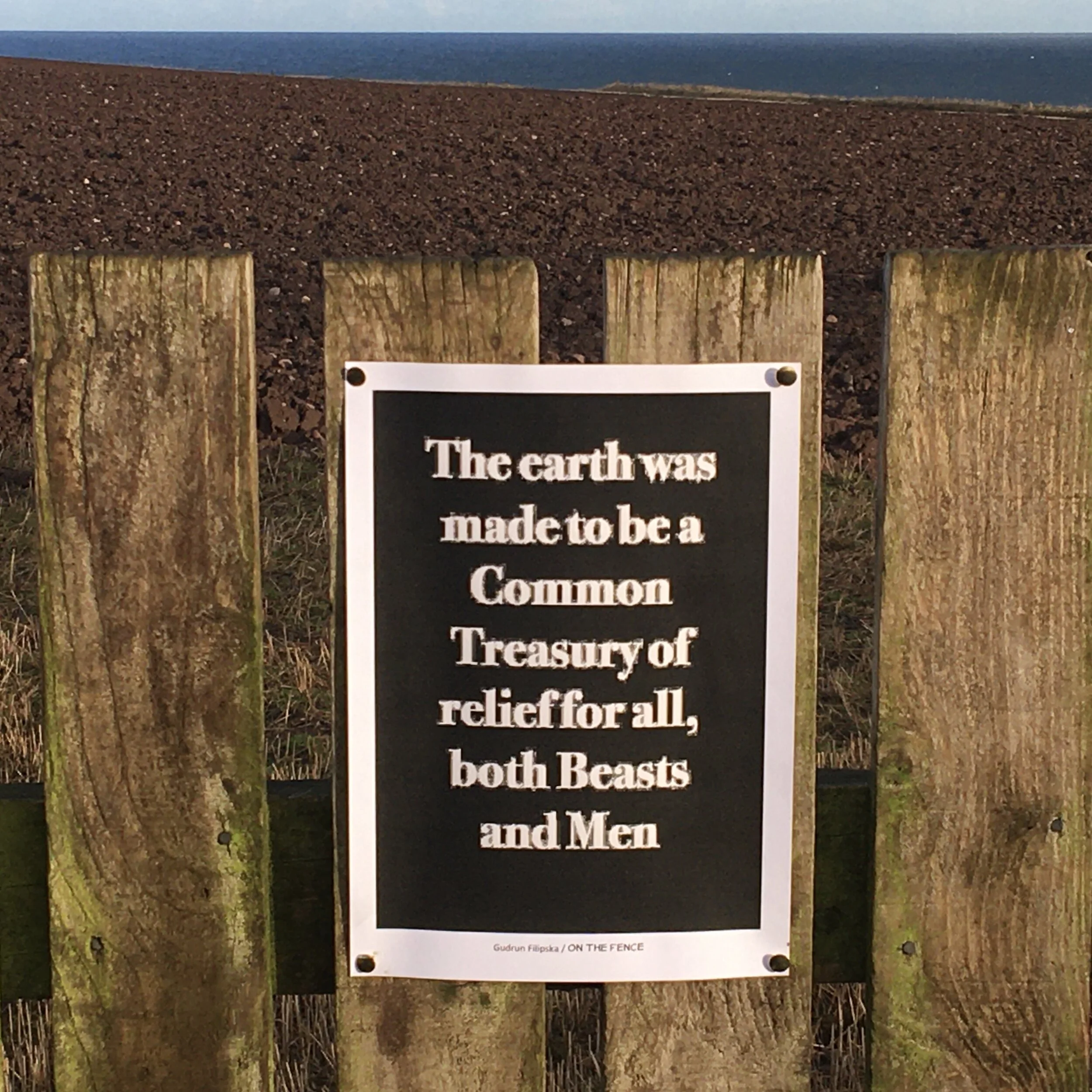

Images Curtesy Iain Irving.


Pinhole Camera photograph on aluminium. Camp at Holkham beach 2020.
‘The S Project: The shortest distance is not a straight line’ Carly Butler and Gudrun Filipska. Hatch Gallery Vancouver.



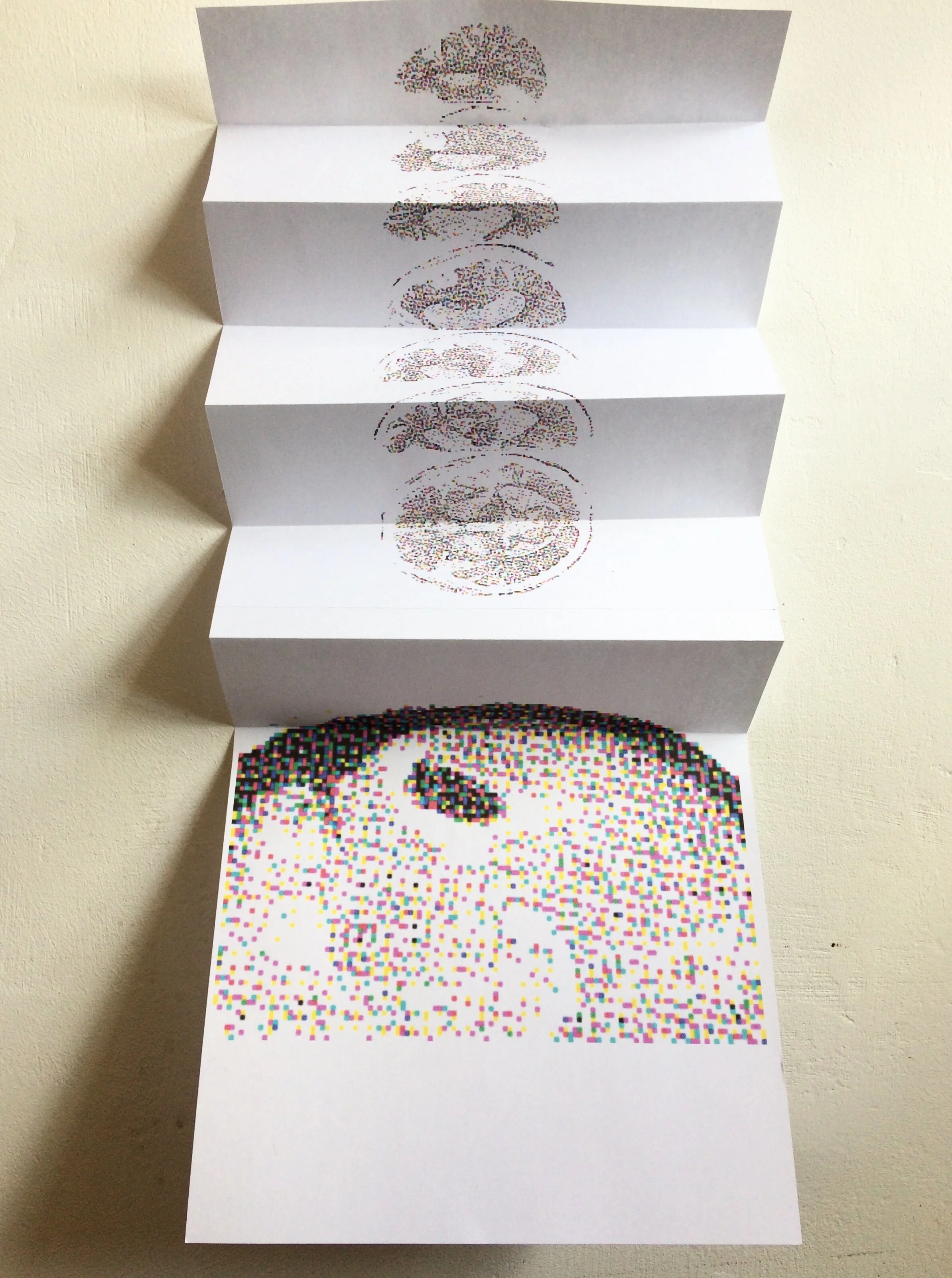
A collaboration with the artist Caroline Kelley shown at at the BAAL (British Association for Applied Linguistics) Annual Conference 2019, Manchester Metropolitan University. August 2019.
This paper based installation is a collaboration between Caroline Kelley and Gudrun Filipska. Emerging
out of conversations about the shift or interval between language changes, the images work with the ideas
of involuntary code switching in the ‘simultaneous bilingual’. The work is made in reference to two 'case
studies' ; Firstly Caroline's five year old son who speaks two languages since birth and often borrows
from language X when speaking language Y. Recently near the forest in Versailles he asked “Est-ce que
there are loups in the woods?” - this is represented here by a charcoal drawing of an audio wave of his
phrase made from a google translate 'mashup' of voices in French and English.
Secondly we referred to a case study of a female trilingual Cantonese-English-Mandarin speaker who
sustained a traumatic brain injury, damaging her frontal lobe and causing pathological aphasia with
involuntary switching/ mixing of the three languages. The images here reference CT scans of the patient's
brain and have been created through a process of manual and digital manipulation.
Using the motif of 'breath' from Julia Kristeva's Desire in Language and code switching as 'shift' for
Grosjean, the work plays with the moment where instinct infiltrates the symbolic order of language –
disturbing the possibility of semantic and grammatical interpretation and engendering a moment where
language works to its own logic; the alternation of utterances from one language to another creating a
point of shift or pause where new meaning can be generated.
Second image in Slideshow shows Caroline Kelley’s soundwave from her wider projects Motherwork and In the Woods
‘In a deep cavern carved inside a frozen mountain on an island high up in the Arctic lies the most biodiverse room in the world. The Svalbard Global Seed Vault holds over one million samples of seeds from all around the world. The Vault serves as a ‘back-up’ in case disaster (e.g. fire, flood, civil war) strikes the genebanks holding the original collections. The Seed Cultures Initiative seeks to create an archive of visual artworks to help conserve the cultural heritage of seeds. Its aim is to celebrate the way seeds live within vast webs of interrelations and to honor the fertile bonds between biological and cultural diversity in agri-food systems.’
My work ‘Seeds/Church/Trousers’ An excercise in paraperetic seed collecting is included in the archive and will be on digital display as part of the AGRI-Cultures Seed-Links exhibition at Svalbard Seed Vault in the Norweigen Arctic, opening on Sat the 8thof June 19.
https://www.cognitivesensations.com/blog/feminising-the-fitbit-pedometrics-and-proxy
http://www.gudrunfilipska.com/new-index-1#/seedschurchtrousers/

Image from work I had in LUMEN’S show at RAW LABS, Bow Arts last month, from my ‘100 Ways to Say Moon’ series.

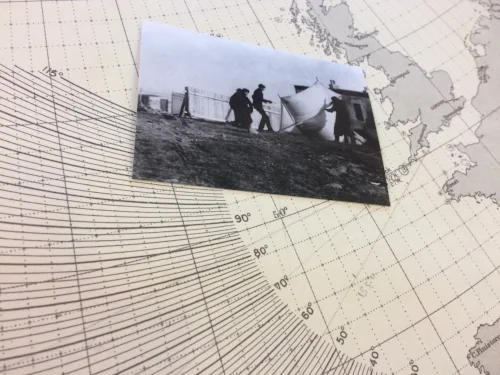
Images from "S" the archive of materials created between myself and Carly Butler showing at 148 Mayall road, Brixton.
Documentation from my contribution to 'Soundwalk Sunday' The Museum of Walking's walking performance event. Listing here.
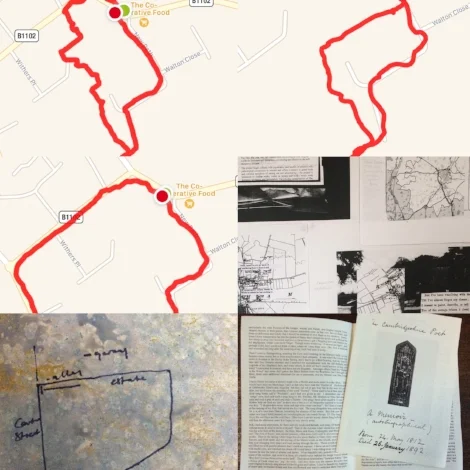
'Mapping a way out of the back yard'. A series of walks around the village of Fordham, including members of the public and interested parties, mapping circular routes with a GPS tracking device.
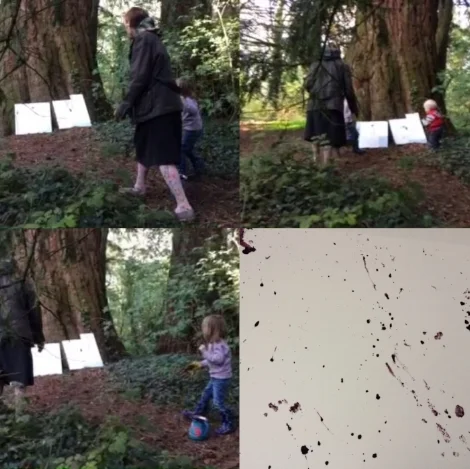
Culminating in a performative excercise in ink covered Pine Cone flinging underneith the giant Redwood tree in Fordham ornamental wood.
Notes from GPS Embroidery, Residency on Jersey led by artist Lizzie Philps and supported by Jersey Arts Trust and LADA (Live Art Development Agency).

Notes/maps/internet cabling infrastructure, tourist cultures and walking.

Notes, including documentation from my 'Pocket Archive' and writing on the connections between Jersey and Newfoundland.

'Elt' Colloquial Fenland word for damp, written with a GPS tracker before the tide came in on Goyey Beach, Jersey.

The highest points on Gorey Beach, Jersey mapped with a GPS Tracker.

Highpoints on Gorey Beach, Jersey mapped with a GPS tracker before the tide came in.

'Horizon' written with a GPS tracker on Groznez cliffs, Jersey.